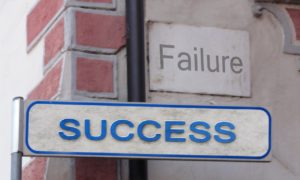
“Change is not a threat, it’s an opportunity. Survival is not the goal; transformative success is.”
– Seth Godin
Change as Threat or Opportunity
Periods of change are rich with potential – but success depends on people successfully navigating difficulties and seizing opportunities for growth. Such transitions can challenge an organization at any (or all) levels:
- Organizational Level: Mergers and acquisitions; corporate restructuring; rebranding; new leadership; major changes in purpose, vision, and/or core business; strategic planning process
- Team or Project Level: Closing of a project, dissolution of team, new client or initiative, new leadership; transition in calendar or fiscal year
- Individual Level: Change in role; promotion; new team; new calendar or fiscal year

When leaders fail to plan appropriate for such transitions, their companies are at a huge competitive disadvantage. They constantly operate in reactive mode, buffeted by today’s complex, uncertain, and fast-paced environment. The toll this takes on both people and business can lead to burnout, disengagement, revenue loss, and even business failure.
Organizations whose leaders understand the strategic benefits of managing transitions effectively are far more likely to succeed. They maintain a culture of continuous improvement, where all employees take responsibility for routinely distilling and leveraging past learnings and setting clear vision and plans for future achievements, leading to:
- Breakthrough innovation, creativity, and growth
- More efficient and productive processes
- Enhanced, productive knowledge sharing and utilization
- Clear vision and strong sense of purpose
- Increased agility at all levels
- Aligned, high-performing teams
- Empowered, motivated individuals
- A more highly skilled, adaptable, engaged, and loyal workforce
The Challenges of Change
“Change can be beautiful when we are brave enough to evolve with it, and change can be brutal when we fearfully resist.”
– Bryant H. McGill
Understanding the benefits of change and easily managing it, however, are two very different things. For the vast majority of people, change is hard, and we have our human evolution to thank for that. Our ancestors stayed alive because they perceived any change as potentially life-threatening. While humans today largely live in relative safety, our brains have not evolved as quickly as modern society has: they’re still wired to perceive change as threats, and threats still trigger stress reactions (i.e., the fight-or-flight response).

This system gets activated whether we face a sabretooth tiger or a performance review. When it does, critical executive functioning skills like prioritization, problem-solving, and decision-making become harder to access, so humans (and thus employees) become far less effective individually and collectively. Fear, worry, and distrust arise. Sleep, digestion, and immune systems suffer. To deal with the discomfort, people seek control, actively resist, and even sabotage an initiative – or they become paralyzed or disengaged.
If the threat goes away or is deemed unimportant, the system goes back to normal. When stress and uncertainty are more ongoing, as is often the case in today’s volatile business environment, the fight-or-flight activation and its physical and psychological consequences are ongoing as well. The toll is tremendous: chronic stress costs U.S. companies over $3 billion annually.
Managing transitions effectively is not only good for business; it’s imperative for the well-being of our society.
The Jedi Skill of Managing Transitions
“It is not the strongest or the most intelligent who will survive but those who can best manage change.”
– Charles Darwin
Organizations with cultures that value awareness, communication, development, empowerment, and accountability navigate transitions far more successfully than those who don’t. In them, leaders ensure that employees have the skills and processes to more effectively deal with change.
“You can’t stop the waves, but you can learn how to surf.”
– Jon Kabat-Zinn

People in these organizations manage themselves and their teams, enabling employees to respond, cope, and adapt, rather than react. In doing so, they maintain access to the critical executive functioning to generate solutions, make decisions, and lead others. They take responsibility for their own mindsets and behavior and for their role on a team. This increased self-efficacy and resiliency buffers them (and by extension their teams and the organization) from the effects of stress associated with change and uncertainty.
Ending the Old Chapter and Starting the New
“Without reflection, we go blindly on our way, creating more unintended consequences and failing to achieve anything useful.”
– Margaret Wheatley
Key transition points (project endings, new client engagements, team changes, fiscal or calendar year endings, etc.) are strong opportunities for individual, team, or organizational growth.

At these times, effective individuals and teams capture learnings about what went well, what didn’t, and why – and make changes for the future. They resolve any interpersonal or process problems so they don’t continue to cause issues. Everyone starts the new phase with shared knowledge, a clean slate, and a fresh perspective. Teams align around a vision and then develop the operating principles and plans to achieve it together.
Working with Leisen Consulting
“We cannot become who we want while remaining who we are.”
– Max Dupree

I help individuals, teams, and organizations leverage times of transition to their strategic advantage through: (1) skill-building and support, (2) team alignment and effective communication, and (3) transition management.
Skill-Building and Support
For individuals, this includes coaching and support, as well as teaching stress management, mindfulness, resilience, growth mindset, and empathy skills to manage oneself and others more effectively. All of these interventions help people not only survive but also to maintain the energy and resources to adapt and thrive.
Team Alignment and Effective Communication
I help new teams form, supporting them to align around a shared vision and to develop operating principles to achieve that vision. For teams experiencing challenge, I work with them to process difficulties, communicate more effectively, and reset ways of working so they take collective responsibility for successfully moving forward.
Transition Management
At key transition points, I take individuals and teams through a process of closing out one phase and preparing for the next. Such transition points include the close of major projects or client engagements, significant changes in team structure or focus, beginning of fiscal or calendar years, and other important shifts that affect the individuals in the organization.
Using guided facilitation, participants process challenges, successes, and missed opportunities so they can capitalize on these collective learnings in the future. They also create their vision for the next phase and identify opportunities for individual and team growth. Participants create and align on operating agreements, processes, and action plans to achieve that vision.
This process may also be used at an organizational level during strategic planning cycles and times of major change, such as corporate restructuring, new leadership team formation, or major rebranding initiatives.
I characterize this is a corporate ‘rite of passage,’ where people acknowledge growth, process challenges, distill learnings so they can leave the past in the past – and then set their vision and step powerfully into the future. In a very short amount of time, individuals and teams leverage strong strategic insights and are ready to take focused action toward achieving a shared vision.
The Benefits of Creating a Culture that Supports Transition
“Reflection and action must never be undertaken independently.”
– Paulo Friere
Organizations do not have to sacrifice agility to support their people through transitions. Quite the opposite: companies that invest to utilize transitions to their advantage will ultimately be more successful.

They create a culture of continuous improvement.
They’re aligned and working toward a shared vision.
They create conditions for innovation and creative problem-solving.
Their employees are more skilled, energized, and committed.
These companies do not merely survive. They generate transformational success.
Let’s Get Started
I look forward to talking with you about how we can work together to best support your organization. Use the Contact Form or send an email to marybeth@leisenconsulting.com, and we will set up a free consultation to get started.
